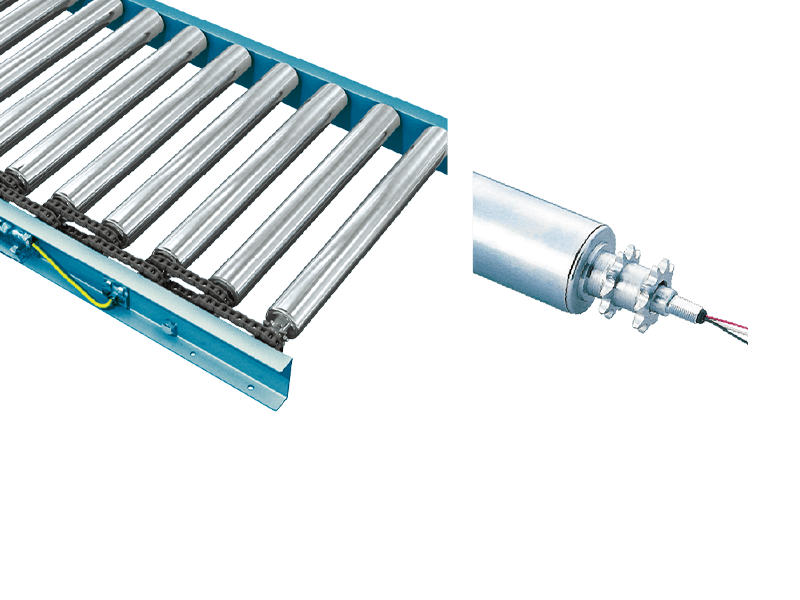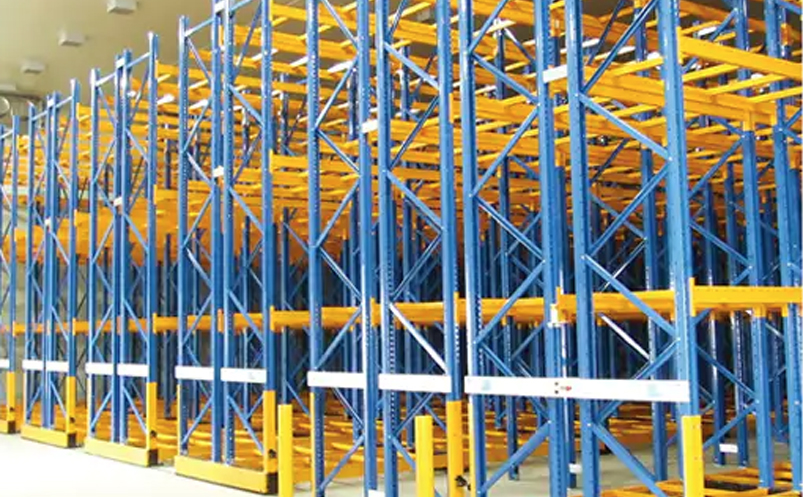In modern manufacturing, warehousing, and logistics, the need to transport products safely, efficiently, and precisely has led to the widespread use of motor roller conveyors. Unlike traditional belt or chain conveyors, motor roller conveyors (MRCs) employ individually powered rollers that can control the movement of items more delicately and intelligently. This makes them particularly useful for handling fragile, delicate, or irregularly shaped products—items that might otherwise be damaged or destabilized on conventional systems.
However, understanding how these conveyors achieve such gentle and adaptive handling requires exploring both their mechanical design and the control technologies that drive them.
Understanding Motor Roller Conveyors
A motor roller conveyor—often called a driven roller conveyor or motorized roller conveyor (MRC)—uses rollers that are each driven by integrated electric motors or gear-driven systems. These rollers can be individually controlled or grouped into “zones,” each managed by a sensor or controller. When an object enters a zone, the system detects it and activates only the rollers required to move that object forward.
This differs from traditional conveyors that move continuously, whether or not a product is present. The zone-based operation provides both energy efficiency and gentle handling, as products can stop and start smoothly without the abrupt forces associated with mechanical stops or sudden changes in speed.
For fragile or irregularly shaped products, such control precision is crucial. The modular nature of motor roller conveyors also allows engineers to tailor layouts and control logic to meet specific product-handling challenges—something that’s often impossible or inefficient with conventional conveyor systems.
Key Challenges When Handling Fragile or Irregular Items
Before exploring how MRCs address these challenges, it’s important to understand what makes certain products difficult to handle in the first place:
- Fragility: Glass bottles, ceramic components, electronic assemblies, or packaged food items can crack, dent, or deform under vibration or impact.
- Irregular shapes: Items that are not flat or symmetrical—such as oddly shaped castings, bags of powder, or shrink-wrapped packages—may not sit evenly on rollers, making them prone to tipping or jamming.
- Unstable centers of gravity: Tall or uneven products can easily fall if subjected to acceleration or deceleration forces.
- Variable dimensions: In mixed-product environments (e.g., e-commerce or distribution centers), products of many shapes and sizes may share the same conveyor line.
- Delicate surfaces: Products with soft coatings, polished finishes, or printed labels can be easily scratched or scuffed during transport.
Motor roller conveyors address each of these concerns through a combination of mechanical design, sensing and control technologies, and custom engineering strategies.
1. Gentle Acceleration and Deceleration
One of the most important features of motor roller conveyors is their ability to control speed precisely. Each motorized roller can start, slow down, or stop independently, governed by a programmable logic controller (PLC) or a distributed control module.
This enables soft-start and soft-stop functions that reduce the mechanical stress on products. When an item enters a conveyor zone, the rollers accelerate gradually until they match the desired transport speed, avoiding sudden jerks. Similarly, when an item reaches the end of the line or encounters a queue, it can decelerate smoothly to prevent collision or toppling.
For fragile products—like glass jars or electronic boards—this controlled motion minimizes vibration and impact. For irregularly shaped products, it helps maintain balance and reduces the risk of sliding or rolling unexpectedly.
2. Zone Control and Zero-Pressure Accumulation
Traditional conveyor systems often rely on physical stops or mechanical clutches to separate items. These can cause collisions or back-pressure, especially in accumulation zones. Motor roller conveyors, on the other hand, employ zero-pressure accumulation (ZPA) control.
Each conveyor zone is equipped with sensors that detect the presence of an item. When a downstream zone is occupied, the upstream zone automatically pauses movement, ensuring products never contact each other. As soon as the next zone becomes free, movement resumes seamlessly.
This intelligent flow control is particularly beneficial for delicate packaging (such as blister packs or bottles) or uneven items that could otherwise be damaged by contact or compression. ZPA ensures each product travels independently, maintaining gentle spacing and consistent orientation.
3. Custom Roller Materials and Surface Treatments
The choice of roller material plays a critical role in how well the conveyor handles delicate or irregularly shaped products. While standard steel rollers are durable, they can be too hard or slippery for sensitive items. Many motor roller conveyors therefore use specialized roller coverings or surface coatings, such as:
- Polyurethane (PU): Provides a cushioned, non-slip surface ideal for fragile packaging or glass.
- PVC or rubber sleeves: Offer additional grip and vibration damping for irregular or lightweight products.
- Antistatic coatings: Useful in electronics manufacturing, where static buildup can damage components.
- Textured or grooved rollers: Help stabilize non-flat items or convey items with slightly curved bases.
By selecting the right roller surface, manufacturers can tailor the conveyor’s friction, cushioning, and traction properties to match product requirements precisely.
4. Modular and Configurable Layouts
Fragile or irregularly shaped items often require custom path configurations that guide them safely through turns, merges, and inclines. The modular nature of motor roller conveyors allows engineers to design these layouts flexibly.
Modules can include:
- Curved sections that maintain orientation without excessive centrifugal force.
- Inclined or declined segments with speed control for smooth elevation changes.
- Transfers and diverters that gently route items between lines.
- Lift gates or accumulation buffers to isolate delicate batches.
This adaptability means that fragile or odd-shaped products can be handled using the same system, without the need for excessive manual intervention.

5. Integration with Smart Sensors and Controls
Motor roller conveyors are increasingly integrated with smart control systems and sensors that enhance product handling precision. These may include:
- Photoelectric sensors for item detection and spacing control.
- Weight sensors to adjust roller torque and speed based on load.
- Barcode or RFID readers for product tracking and sorting.
- Vision systems that detect orientation or shape and adjust movement accordingly.
For fragile products, such automation ensures that handling conditions—speed, acceleration, contact force—are always within safe parameters. For irregular items, sensor-driven logic helps identify when an object is skewed or misaligned and can correct or stop motion before damage occurs.
6. Reduced Vibration and Noise
The motorized rollers in MRCs generate far less vibration than chain-driven or belt conveyors, as each zone operates independently and only when required. The absence of continuous mechanical coupling minimizes transmitted vibration—a key factor when transporting items like electronic components, glass containers, or medical devices.
Additionally, many motor rollers are engineered with low-noise brushless DC motors and vibration-damping mounts, creating a quieter and more stable environment. This not only protects products but also improves working conditions for operators.
7. Smooth Product Transfer Between Zones
Irregularly shaped items often encounter problems when transferring between conveyor sections, especially if there are gaps or level differences. To address this, motor roller conveyors are designed with precise roller spacing and coordinated zone control.
Some systems employ pop-up transfers or powered side guides to stabilize items as they move between zones. Others synchronize roller speeds between adjacent zones, ensuring the item transitions smoothly without a jolt or shift.
For fragile items such as bottles or jars, this reduces the risk of tipping or chipping. For irregular loads like soft bags or wrapped goods, it prevents snagging or compression.
8. Adaptability to Product Variety
In industries where product sizes and shapes vary widely—such as e-commerce fulfillment or packaging lines—motor roller conveyors offer unmatched flexibility. Each zone can detect product presence and adjust operation automatically, without requiring mechanical changes or manual setup.
Some systems incorporate adaptive drive control, which can modify roller torque or speed depending on the detected weight or surface condition of the product. This level of adaptability is ideal for environments where both delicate and bulky products share the same conveyor network.
9. Maintenance and Reliability Benefits
From a practical standpoint, the low-maintenance design of motor roller conveyors also contributes indirectly to safe handling. Because there are no chains or belts to tension and fewer moving parts overall, there’s less vibration, slippage, and wear—factors that can cause unpredictable movement or shocks on traditional conveyors.
Each roller’s built-in motor is typically sealed and protected against dust or moisture, ensuring consistent performance even in environments where fragile items must remain clean and uncontaminated (such as pharmaceutical or food-handling applications).
10. Applications Across Industries
The versatility of motor roller conveyors makes them suitable for a wide range of applications where fragile or irregularly shaped items are common:
- Electronics manufacturing: For circuit boards, sensors, or assemblies requiring static protection and gentle handling.
- Food and beverage packaging: For glass bottles, jars, or trays of perishables that must remain upright and undamaged.
- Pharmaceutical logistics: For vials, blister packs, or medical kits sensitive to shock and vibration.
- Automotive parts handling: For irregularly shaped castings, seals, or components with non-uniform geometry.
- E-commerce fulfillment: For diverse product shapes, from soft bags to rigid boxes, handled on the same system.
In all these sectors, the precise motion control, modular design, and zero-pressure accumulation capabilities of MRCs make them a natural choice for reliable, damage-free product transport.
11. Future Trends and Innovations
As automation continues to evolve, motor roller conveyors are being enhanced with IoT-enabled control systems, AI-based product recognition, and predictive maintenance analytics. These advances further improve the system’s ability to handle fragile and irregular items by predicting how each product should behave on the conveyor and adjusting parameters dynamically.
For example, AI-driven controllers can learn from real-time data—detecting when an irregular item might be unstable and automatically reducing speed or adjusting roller torque to compensate. Predictive algorithms can also anticipate when a roller needs servicing before it causes vibration or uneven motion that could damage delicate goods.
Conclusion
Motor roller conveyors represent a thoughtful balance between mechanical precision and intelligent control, making them exceptionally well-suited for handling fragile or irregularly shaped products. Through soft acceleration, zone-based operation, customized roller surfaces, and smart sensing systems, they ensure items are moved gently, safely, and efficiently.
For businesses seeking to transport delicate or complex products without compromising throughput or reliability, these conveyors offer a versatile and future-ready solution. Their modularity, energy efficiency, and adaptability to diverse product profiles have made them an essential part of modern material handling systems—and a key technology for industries where product integrity is paramount.







